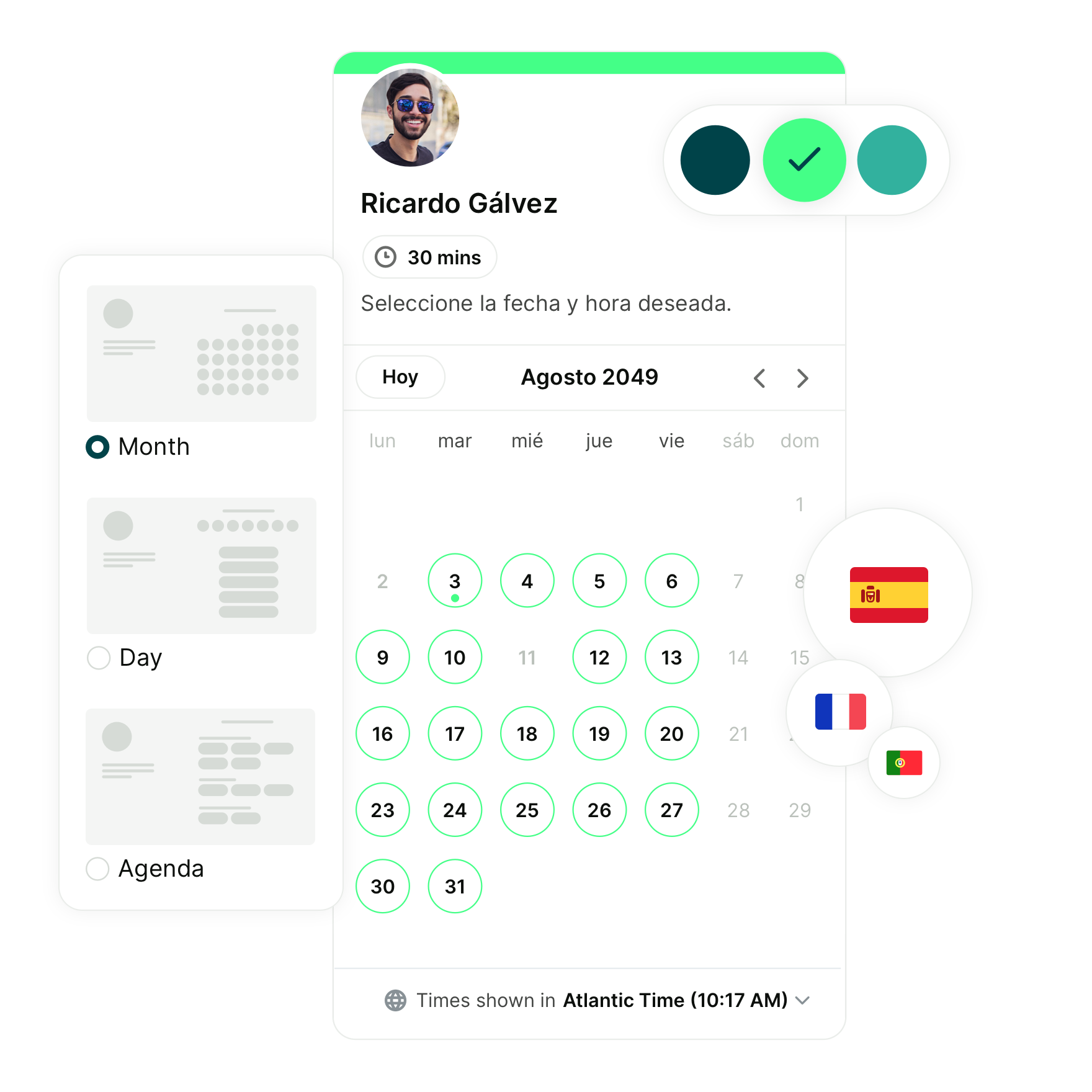How to have a more productive workforce with Mark Graban
In this episode of our productivity podcast, Get More Done, we show you how to build a culture of improvement in the workplace by getting everyone involved in driving the business forward.
The YouCanBookMe team
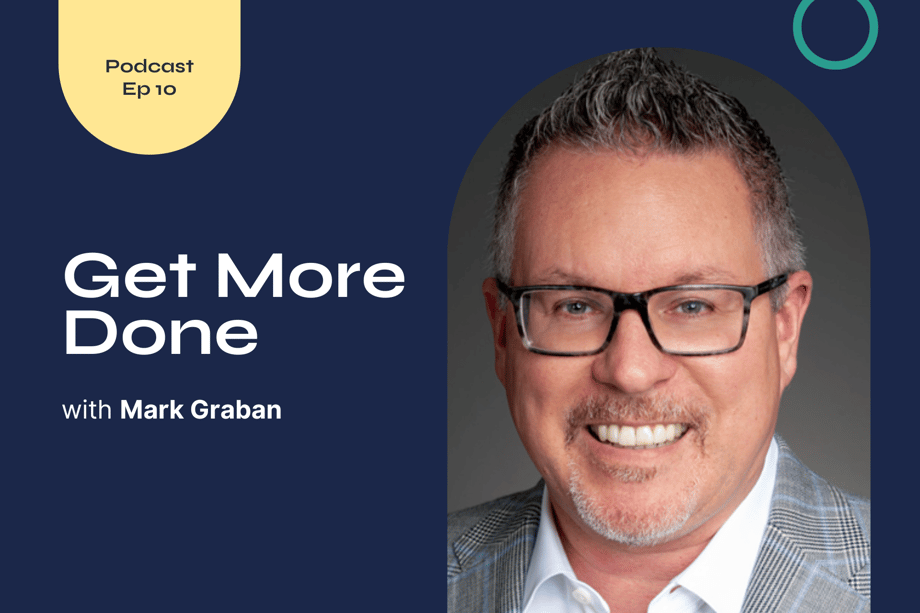
The best way to get employees and managers working together is when they’re all involved in the decision-making process.
Everyone’s ideas matter. As a manager, you may be stressed at always having to tell people what to do. As an employee, you may be frustrated your views don’t count.
In this episode, author and consultant Mark Graban shows how to use the Japanese philosophy of Kaizen to continuously improve operations and productivity while involving all employees.
You can find Get More Done on:
Listen to episode 10:
In the episode, “Continuous Improvement: How to have a more productive workforce,” we discuss:
- How the Japanese philosophy of Kaizen will improve productivity of businesses and teams
- Why a workplace suggestion box can be counter-productive
- Ways that managers and leaders can motivate their teams and help build the culture of improvement
- Why the role of leader/manager needs to shift from decision-maker to coach
- Ways of measuring the successful outcome of changes in the workplace
- Traps to avoid when measuring performance
- How to get people to spur innovation and make change in their day-to-day work
- Secrets to managing your day and staying organized
- Why you should live in your calendar instead of living in your inbox
- Why mistakes are important and how successful people will learn from them
Favorite Quotes
“Kaizen is a Japanese word that translates pretty directly to mean good change. It's usually used in the context of continuous improvement in a workplace. It could be a personal philosophy that you apply in your own life, but there are mentors of mine who've helped me learn that, in a lot of ways, Kaizen is self-initiated. What can you do to reduce frustrations in your work to make your work go more smoothly?” - Mark Graban
“I think, for one, a manager's just one person. If you've got a team of 20 people, 20 people can come up with so many more ideas. 20 can go and test so many more ideas and that scales well beyond what any one manager or leader could do.” - Mark Graban
“YouCanBook.me is a hugely important tool. I've learned how to set up multiple calendars that are all driven off the same Google Calendar for visibility. But as meetings drop into my calendar, they're clearly labeled. Here's a pre-call for this podcast, with this person. Here's an episode of My Favorite Mistake that I'm scheduling. Here's a meeting, an inquiry about consulting or speaking. So looking at the calendar instead of just seeing meeting, meeting, meeting, or name, name, name, that helps me mentally plan my day.” - Mark Graban
“Encourage people to go Google Dan Markovitz and his books. One tip from him is to live in your calendar instead of living in your inbox. What's the default application that you have in your face on your computer? Having the calendar in front of you, I think is a better way of tracking time and not being constantly distracted by emails.” - Mark Graban
Meet today’s guest, Mark Graban
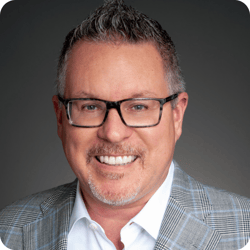
Mark Graban is an internationally recognized consultant, author, professional speaker, and entrepreneur. He is also a senior advisor for the technology company KaiNexus.
He has been a podcaster for over 15 years and his most recent series is called "My Favorite Mistake" (and he uses YCBM to schedule all of his guests).
He is most recently the author of "Measures of Success: React Less, Lead Better, Improve More." Mark's other books include "Lean Hospitals" and "Healthcare Kaizen." He was the creator and editor of the anthology "Practicing Lean."
Mark has a B.S. in Industrial Engineering from Northwestern University, along with an M.S. in Mechanical Engineering and an M.B.A. from the Massachusetts Institute of Technology's Leaders for Global Operations Program.
Productivity resources to explore
“Continuous Improvement: How to have a more productive workforce,” full transcript
This transcript has been slightly edited for clarity and readability.
Ben (00:00):
This is Get More Done, a YouCanBook.me podcast, and I'm Ben your host. Each month. YouCanBook.me helps millions of people save time and get more done by automating their scheduling. Because of this we wanted to understand and explore other aspects of productivity. In every episode, you will meet business leaders, entrepreneurs, CEOs, and managers, and they will share how they help their teams and customers level up and how they're doing more with less. In this episode, I sat down with Mark Graban. Mark is an author, speaker, consultant, and podcaster. His main focus is around the Japanese philosophy, Kaizen, or continuous improvement. During our conversation. Mark explains why companies should adopt a Kaizen methodology and how they can set it up. Enjoy.
Ben (00:54):
Welcome back to the Get More Done podcast. A podcast all about productivity and just doing more with less. In today's episode, I'm sitting down with Mark Graban, the author, speaker, consultant, man of many trades, Jack of all trades. So Mark, welcome to the podcast.
Mark (01:10):
Ben, hi, thanks for having me.
Ben (01:13):
Awesome. So what you may have seen from our previous episodes is we start with an icebreaker question. So this episode we want to talk about if language wasn't a barrier for you, because you're a traveled man, where in the world would you live right now and why?
Mark (01:30):
Right now part of that makes me think, because you think of COVID times, but a country that I've visited five times in the last 10 years and I would love to spend some extended time living there is Japan. Currently language would be a barrier, but, like you said, if language is not a barrier, I've only had 10-day stints in Japan and I realize I have this sort of idealized outsider's view of the country, but I really would love to spend more time there. I have some friends who have lived for a year or two in Japan and so maybe…
Ben (02:07):
Yeah, Japan is an amazing country, great culture. And the language barrier is not too tricky, but as you get more immersed, I’m sure it would be as you build your life there. What was one of your favorite parts of all your trips to Japan?
Mark (02:22):
Well so they were all work focused trips because with the work I do, we spend a lot of time studying Toyota, for example, as a company to try to learn from and emulate, whether it was in manufacturing, where I started my career or in healthcare where I've really focused a lot the last 15 years. So there's a lot to learn from the organizations there, but I just love the food. When you're there as a visitor, as a tourist, you are spoiled. The customer service culture in Japan is so high and so accommodating. You check into the front desk at the hotel and you have to let them have your passport for a minute and they have to go make a photocopy. And generally the person behind the desk will run and I'm not in that much of a hurry, but I think they don't wanna waste your time.
Mark (03:16):
They are, at least on the surface, very, very welcoming and very kind. And, you know there's a more complicated version of the story of Japan being such a homogeneous society and sometimes not always truly welcoming to outsiders, but I don't mean to criticize, but I think being there I just enjoy the uniqueness of the country. I've found it very welcoming and just a very comfortable, interesting place to be, or at least being comfortable in my discomfort at talking.
Ben (03:55):
Yes. Right. I have fond memories of Japan, because that was my pre-pandemic trip. Me and my wife spent a few days in Japan, 10 days like you mentioned and it was just amazing. Definitely be going back for sure. Awesome. So, with all that you're doing, we talked a little bit - author, speaker, consultant, advisor, podcaster - how do you sum it all up and how do you do all of that?
Mark (04:22):
I'm fortunate to be able to work independently. I started doing that back in 2010, so I do some work independently through my own company as a speaker. I've written and now self-published. I've had a couple of books go through a publisher. My most recent book is called Measures Of Success. I published it myself through my own company. I do training and some solo consulting and things on my own, but then I'm fortunate to partner up with a couple of different organizations. So one is a software company called KaiNexus. They are heavy users of YouCanBook.me within the team. That's how I learned about YouCanBook.me. This software company I've been an advisor to and sort of a part-time team member. That company's grown over the last 10 years plus I have an ownership stake in the company continuous improvement software platform. And then there's a consulting firm called Value Capture that I do a lot of subcontract work through in the healthcare improvement space. So I get to dabble. I'm fortunate. My wife has a great corporate career path that allows me to do some things that are a little riskier and I don't have to provide health insurance for us. Yes, I'm fortunate for that, right?
Ben (05:44):
So one of the aspects of your work is teaching about Kaizen. So can you tell us a little bit more about that and how businesses and teams can use that method to improve their productivity?
Mark (05:57):
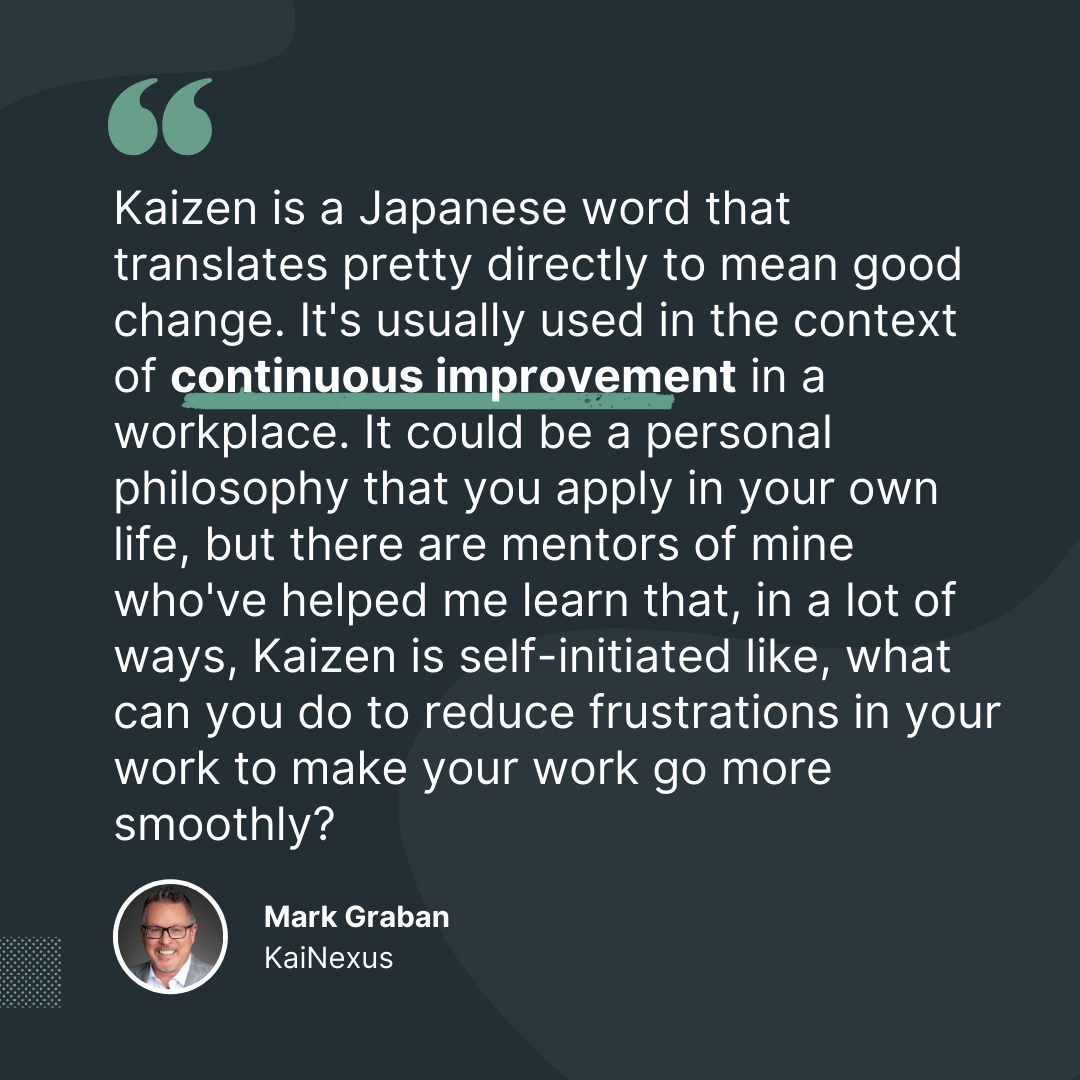
Then you can also target that to what would benefit customers? What would benefit the organization that you work for? So, you know, Kaizen is as much a mindset as it is a methodology. There are tactics and there are methods - one of the key methods, one of the key tactics would be to not use a traditional suggestion box. Don't lock up people's ideas in a suggestion box that maybe on a monthly or a quarterly basis gets reviewed by some committee or management team.
Mark (07:04):
Kaizen is more participatory with you and your team and your direct frontline manager to identify problems and test solutions to those problems in a, sort of, incremental iterative way. So this methodology applies - the roots would be maybe considered in manufacturing. Kinaxis is a software platform built on these Kaizen mindsets and methodologies. We practice what we preach internally. We are very focused on creating a culture of continuous improvement and that starts with our CEO and the way he treats people, the way he listens, the way he empowers people to experiment and try new things. And then, there's trying to create that organizational culture. So you can practice Kaizen individually or within a team, or I think there's a greater effect when it's done companywide.
Mark (08:02):
One of the things I shared on my blog years ago, and I re-shared with the 10th anniversary of YouCanBook.me, was applying Kaizen, if you will, to some of my own meeting scheduling process. I'm in a lot of ways, a solopreneur. I don't have a virtual assistant. I'm often scheduling meetings with people who do have administrative assistants. And I realized a lot of my time was being consumed with back and forth about proposing meeting times. And when are you free? And when are you free? And that doesn't work for me now. So YouCanBook.me - and I can share more detail about this if you want - has been such a helpful tool for me in terms of saving time and just more smoothly managing meetings, bookings, whether it's for podcasts or for consulting or other stuff. I think my use of it has created a good impression with people to say, “Oh, well, this Mark seems to practice what he preaches.”
Ben (08:59):
Yeah. And it's great to see and awesome that you've been a customer of ours for so long and, and have grown with the tool alongside us. And great that you're practicing what you preach at KaiNexus as well. ‘Cos it's one thing to say, “Hey, you, well should be doing this”, but if you're not doing it internally. Now in that vein, how would a team get started with that Kaizen principle? What are some early things that they could do to start for that continuous improvement?
Mark (09:27):
I mean the starting point when I've worked with organizations in different industries can vary a little bit, depending on what some of their history has been. Do they have a suggestion box? Is a suggestion box being used and is it effective? Usually not. And that's not the fault of the employees. That comes back to culture and leadership mindsets. So sometimes the first step is to almost ceremonially tear down the suggestion box and reflect on what worked or what didn't work with that. I think an effective Kaizen methodology involves transparency. That could be as simple as pre-printed note card forms that go up on a bulletin board so that everybody can see the problems that are identified, the ideas, the things that are being tested to help prioritize and track and manage what's being done.
Mark (10:19):
A lot of organizations use software like KaiNexus to help give web-based visibility to everybody in their team, especially when you have a multi-site multinational organization. A bulletin board only gives so much visibility. So you've gotta give people some mechanism for “here's how we're going to collect ideas and track them.” But then really it's on leadership to encourage people. I've found some very helpful questions to get started would be a question like, “Hey, what bugs you? What causes frustration in your day?” And in helping people learn the difference, like a workaround or a Band-Aid or a papering over of a problem, and really getting better at identifying sometimes the root of a problem. And that comes through practice to make sure we're not just addressing the symptom of something, but encouraging people to speak up, making it safe for them to do so, being welcoming, not being judgmental, not being negative.
Mark (11:22):
The role of leader shifts from being the decider to being more of a coach and facilitator to get people participating. So we can ask “what bugs you?” Second question that pairs up well with that is “what can we fix so that we're not running big, huge ideas up the chain to the senior leadership team?” A lot of it is very much focused on ”what can we do, what small changes can we make to our work?” There may be a time to reinvent the way we do our work, but just encouraging that participation, making it safe for people to experiment and making it safe to try things that don't work out is an important part of that mindset and that culture. And then giving recognition and celebrating when people are making an impact to their work, to customers, to patients, to the organization, you start getting a positive dynamic.
Mark (12:15):
You notice I said recognition not rewards. You don't have to pay people or bribe them, or financial incentives can very quickly get dysfunctional. That was one of the traps with the classic suggestion box system. But anyway, those are, I think, a few of the key tips that I've seen help organizations get started, but then the final thing I'll add is that leaders can't just ask once. You can't just put out a memo or an email or give a speech, once. You've gotta ask people continually to identify problems, to think about possible solutions, to go and test them and evaluate them. And within months, the culture can shift where now that becomes the default, people speaking up and being given permission and safety to start working on improvement.
Ben (13:02):
Yeah. And it makes sense that it's a cultural thing, ‘cos it's a self-fulfilling flywheel where, as you start seeing these improvements, then people get more motivated to do it. But if it's not an actual loop and the feedback goes in, nothing happens then the culture starts to disintegrate. That makes total sense. Yeah.
Mark (13:19):
There's a professor at UT Austin [The University of Texas at Austin] who's done research on why people don't speak up in the workplace, whether that's with ideas, for example. One big factor is fear. They're afraid they're gonna be blamed for the problem they're pointing out or they're gonna be ridiculed or punished or if they don't have psychological safety, that actually the biggest factor of why people don't speak up is a different F word - futility. “I spoke up before and it just wasn't worth my breath or time or energy. So why bother?” And that's sad. That's where it has to start with leadership to try to break some of that negative cycle and say, “it is going to be worth your while. Let's build this culture of improvement.”
Ben (14:05):
Yeah. And as you mentioned, maybe that comes in the form of changing the collection method from something that wasn't working or didn't work to a whole new thing now. On that note, with Kaizen being more about improvement, is that the same as lean operations as you've explored with researching Toyota? Or is it a bit different?
Mark (14:27):
I would say Kaizen is one of the core, fundamental foundational principles of what we would call lean manufacturing, going back to what Toyota would describe as the Toyota production system or more broadly, they use a label of ‘the Toyota way.’ Toyota says the two key pillars of the Toyota way are, one, Kaizen or continuous improvement, two, a concept and a mindset that they either will translate as respect for people or respect for humanity. So I would say you can't have a “lean organization” without Kaizen. You could use Kaizen practices without any of the other lean terminology or lean practices. I think creating a culture of continuous improvement is incredibly powerful, whether it's within the context of lean or Toyota or not.
Ben (15:27):
And have you seen any challenges that teams have run into when trying to adopt these new processes?
Mark (15:34):
And these new principles? Yeah. I mean changing habits often on, let's say, the frontline managers or middle management, trying to change some of their habits of not jumping in with the solutions. We don't want people just making suggestions. That's one of the traps of the suggestion box. You're maybe literally jumping to solutions. I think in the Kaizen mindset, you're taught first to identify what you can call a problem or an opportunity or a gap or an issue or whatever word you use. And first understand the problem because then there might be many possible solutions you could consider. So suggestion boxes based on “here's a solution”. Somebody says, “yes” “no,” “approved,” “rejected.” Where in Kaizen again, it's much more iterative where our focus is on solving the problem.
Mark (16:26):
So the team has an idea and the manager, unless the idea is unsafe or wildly expensive or violates regulatory guidelines or something, your bias should be to let the team try and see. And that's a habit that's difficult to break. A lot of times managers are used to being the boss or that's been the expectation in the organization to have all of the answers. And sometimes one of the things managers, leaders, have to work through is that they sometimes feel kind of ashamed. Like, “well, I didn't know that problem was there and I didn't come up with a solution.”
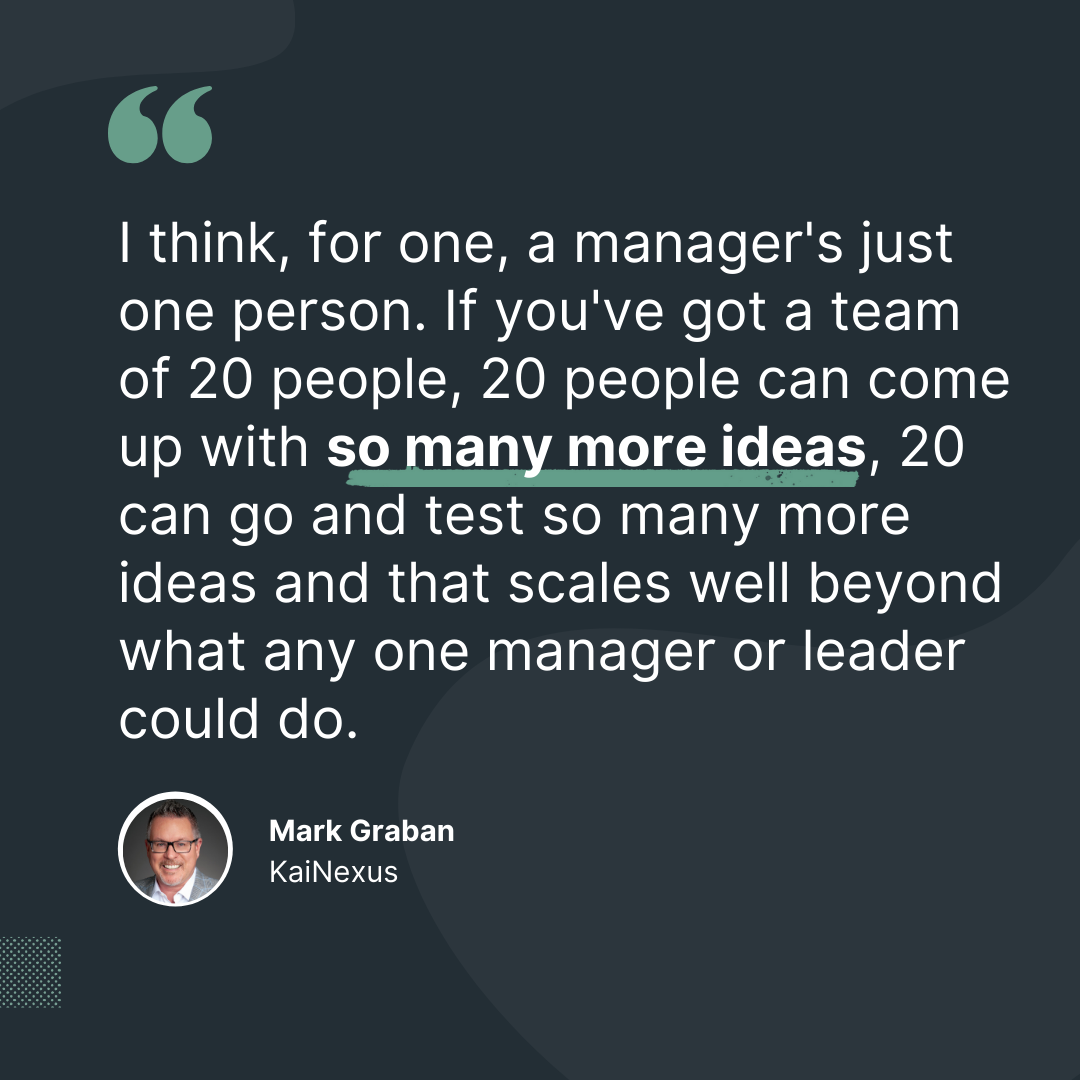
Mark (17:22):
So changing habits and coaching leaders through that is one of the challenges. Sometimes initially there's this big, huge flood of ideas pent up. People say, “oh, now that you ask.” Sometimes people literally bring out a sheet of paper that they've been squirrelling away ideas on. And so upfront, there's a need maybe to try to triage and prioritize. But again, when you give people visibility on a bulletin board or in software, like KaiNexus, you're not forgetting about ideas. There's this list there as time comes up during the day, like “all right, well, there's okay. We're gonna go work on that one. Now let's pull an ad hoc team together. Let's go test that improvement out.” You know, I've found, generally people have ideas, you just have to draw them out.
Mark (18:12):
And again, you have to make it safe for people to speak up and participate and try things. Now, there are some employees where maybe they've worked 30 or 35 years in a bad, if not toxic, environment. It's gonna take time to try to build trust in those folks. And some people, it might be hard for them to get over some of those wounds they have from the workplace. But, generally speaking, I've just seen this approach work so well in so many different settings, KaiNexus has customers in so many different industries: manufacturing, healthcare, service sector, people in government, non profits use this Kaizen style of continuous improvement. You're either continuing to work at it or you've given up. Those are about the only two states that you could be in. You know, the Kaizen fail? Well, maybe you didn't figure it out and you gave up. So keep working at it, right?
Ben (19:08):
Keep iterating, like you mentioned, and tweaking it as you're going. It's important that you mentioned not going to the solution right away. Of just saying, “let's investigate the problem” rather than it being this prescribed thing where it's like, “well, no, we're not gonna do that” rather than saying, “what else could we do? How else can we exactly iterate on it and change?”
Mark (19:27):
One of those coaching questions, a leader might say, so Ben, you come to me, you identify a problem. And I might ask, “well, do you have any ideas of how we could address that?” And you might say, “well, no.” And I might coach you to go and think about it. Go talk to some of your coworkers instead of jumping in and saying, “well, Ben, here's what I think you should do,” ‘cos that doesn't develop your problem-solving skills. So you've gotta give people the opportunity and coach 'em through it. Give it a try. And, that really helps.
Ben (19:55):
I think a lot of organizations need to work on that safety of saying “we can experiment” and if it fails, then it fails. I think people are reluctant to explore things because of the need for it to be perfect or for it to be complete or for it to be well-rounded. Now in that framework, how do folks navigate that and build that into their culture of making it safe for those experimentations? Is it something where you are saying, “what are we hoping to gain out of this experiment?” How would we know if it's a success or can you elaborate a little bit on how folks are navigating that?
Mark (20:34):
So the Kaizen card that I've used and shared with others helps people put in place. My co-author Joe Schwartz and I wrote a book called Healthcare Kaizen, and we have a website www.hckaizen.com where we've got free templates in either PowerPoint or PDF format. You can download them, you can use them, you can tweak them. On a quarter sheet of paper we'd have lines on it, “what's the problem or the issue. What's your idea? What are the expected benefits of set improvement?” Maybe the ideal would be to measure the impact if we have an idea that we think is going to improve safety.
Mark (21:24):
Do we have data like injury rates, lost workday rates? And can we look at the impact on a metric, if we say, “well, we wanna implement this because it's going to improve customer satisfaction.” Sometimes you keep that on a sort of qualitative basis. And sometimes you can do a cause and effect of making this change increased average customer satisfaction rates by 10%. Sometimes if you're doing a lot of improvements, you can't directly connect the dots from this improvement made this much impact, but directionally, if we're making a lot of improvements, we should see improvement in our core business metrics or balance scorecard or our OKRs [objectives and key results] or whatever you call that. And eventually that should flow through then to the bottom line. So we don't want people doing, for example, like there's pitfall of doing projects and counting up. Like if there's too much focus on cost savings, people will add up all sorts of sometime dubious projections and you'll say, “well, our numbers show that are our Kaizen program saved 10 million dollars this year.”
Mark (22:31):
And, an executive might rightfully ask, “well, where’s that flowing through to the bottom line?” So, we've gotta let people focus on improvements that matter to them. Not everything necessarily has a measurable impact, but a lot of improvements will. So cost reduction is fine, but the pitfall to avoid is only asking for cost reduction. You've gotta let people work on improvements that matter to them. The idea is that we're not implementing things that are wildly expensive. There’s an expression from Toyota and the lean methodology that says “use your creativity before capital.” So part of the brainstorming, if somebody has an expensive idea, we might try to ask, “well, is there a more clever way of solving that problem? Can we do a small test of change to reduce some of the risk of people wanting to implement a big, expensive solution that has to be perfect?” Doing a small test of change and with one customer or with one part of the organization allows us to test and validate ideas before trying to scale them.
Ben (23:35):
Yeah. Breaking it down to the smallest step. So then you're not investing, like you mentioned, or you're not setting yourself up for failure because it's missing that mark. That makes total sense. So the other aspect of that measurement side of things, and there's that old saying, “what gets measured gets managed.” In your book Measures Of Success, you talk about how organizations need to adjust their metrics to reduce noise. So how are companies doing that or how should they be doing that?
Mark (24:04):
There' a whole methodology that I was fortunate to learn 25 years ago. There's a statistician, Donald Wheeler, who was at the University of Tennessee and he's been an active consultant, an author, for a long time. His methodology that he calls process behavior charts, and it's a way of visualizing business metrics or other performance data. Let me frame it in terms of the Kaizen discussion. So we're talking about a solution called process behavior charts, and I've written a book about that. Don Wheeler was kind enough to write the forward for that book. The problem or the issue might be things like relying on two data point comparisons, customer satisfaction metric is higher than it was last month, hurray. And then it's lower than the month before and people get upset or they lecture people, or they demand a root cause analysis and things like this where they may be just overreacting to statistical noise in the performance measure.
Mark (25:10):
There are other traps, but the main thing is looking more than two data points. Looking at 12 or 15 or 20, plotting them visually, right? So in Excel it would be called a line chart, visualizing more data and visually looking for, ”are there trends? Does it seem like our performance is just fluctuating around a stable average?” That's often the case or are there points in time where performance has shifted upward or downward? And so process behavior charts, there's a little bit of math involved, but basically calculated in some guardrails, horizontal lines that you would draw on the chart. So you've got your business metric that may be changing or fluctuating or whatever. And then you calculate and draw in what are called lower and upper limits. You calculate and plot the average. And now visually you can use a couple of statistical rules where, let's say, if your baseline was that the customer satisfaction metric would just be fluctuating around an average and all the data points were within those calculated limits, you would call that maybe a predictable system - that metric is predictable within that range of performance.
Mark (26:19):
But then suddenly you see a data point outside of those limits. That's very strong statistical proof that says, “hey, something changed.” Whether it's for the better or for the worse, it could be something that you did as an improvement, or it just happened as an external factor. So a quick example in the last healthcare organization I was working with up until the start of the pandemic last year had a call center metric. So, patients calling in for scheduling and questions and what have you. And one of the metrics was call abandonment rate, the percentage of people who get fed up and hang up. And so that number had been fluctuating around an average. It was pretty stable. It was predictable. It was higher than they wanted it to be. But then that number showed a significant shift downward where instead of fluctuating around an average of let's call it 5%, it was fluctuating around an average of 2%. Something changed.
Mark (27:16):
Was it something that they did or that they could take credit for? No. What changed? COVID. Fewer patients were calling to go to appointments because we were staying at home. And so they avoided the trap of somebody wanting to pat themselves in the back. And this is where the politics is more complicated than the math of like, “look at this great improvement.” They realized the cause and effect was not anything they did. It was something that happened and their prediction. I asked them, “well, what do you predict will happen when things start to get back to normal?” And they're like, “the call abandonment rate will probably go back up” and sure enough, it did. We wanna make sure we understand cause and effect relationships in our business, in our organization. If we made a change, that was that we predicted was going to reduce the call abandonment rate.
Mark (28:06):
We would look for statistical evidence on that process behavior chart, instead of doing kind of a fishy two data point comparison. Like we implemented this change and the call abandonment rate fell from 5.5 to 3.9. That those two data points could be within the range of the typical noise or fluctuation in the metric. You wanna make sure you're not declaring victory based on two data points. That you're not fooling yourself inadvertently or intentionally. We can use statistical measures as a way of connecting the dots between our improvement efforts and the measures that matter to our business.
Ben (28:41):
Yeah. It makes total sense to zoom out and see a larger picture instead of just the couple of data points like you're mentioning and then having those guardrails makes a lot of sense. Because what's the variation? ‘Cos then if you're drastically outside of that or underneath that, then you can zoom back in and figure out what, what changed that. Really, really good.
Mark (29:01):
One quick example and I love the way you said “zooming out”, it’s a great, great way of stating that. Let's say you step on the scale every morning. Here's a good experiment. You've got a scale and let's say, you're happy with your weight. You're not trying to lose weight or gain weight. Step on the scale every morning and write those numbers down and chart it in Excel. And you'll see, maybe with the holidays coming up we may have a change to our system of eating more, exercising less. But you will see, you do not weigh the exact same number every day, especially if your scale's got one decimal point after the weight, right? And you can start to look and see and start understanding your body as a system of what you're putting into it and what you're doing with your body, that number's gonna fluctuate.
Mark (29:47):
And you can learn to stop overreacting to every up and down. You may gain eight-tenths of a pound and then lose seven-tenths of a pound. And you start to understand, you've got fluctuations, don't get too excited about every up or down and understand that noise. And let's say you go away on a vacation, you step on the scale. And now that number's up five pounds. That could be temporary. Now you're gonna make some adjustments to get that back down. You can start to understand cause and effect between your actions and your lifestyle and that number on the scale. If your weight changes, it could be because of something you're doing. Or if you don't understand, that could be a sign of a medical problem of weight going up, weight going down. You may want to go to the doctor, but you're not gonna call the doctor and say, “oh yeah, I'm down two pounds today.” There's lots of physiological reasons why that could be, and then your weight maybe goes back up one-and-a-half pounds the next day.
Ben (30:49):
That's an amazing example. And ‘cos that will fluctuate. You're looking at the variation and then it's a cause for alarm, like you said, if there's something outside of that, but it's all inputs and outputs, no pun intended.
Mark (31:07):
I mean, in a hospital they will talk about patient inputs and outputs. That is a clinical term.
Ben (31:15):
All within that system, the self in this case, but apply it to an organization as well. Makes total sense. So speaking of hospitals, a lot of the work that you've done in your past is improving their process and creating lean operations within the hospitals. We spoke a little bit about COVID, but how are you seeing hospital systems navigate the change with COVID since the start of the pandemic.
Mark (31:39):
There seemed to be a couple of different camps and approaches. First off, I've not been on site with a health system since March of 2020, so a lot of what I'm hearing is secondhand, talking to people I know who work at health systems, that these have been incredibly exhausting if not demoralizing times for people in healthcare. So going forward and trying to recover from that. And we're not out of the woods yet. We're gonna have to figure out how to create a workplace that's more engaging and less frustrating. And for people who are staying in healthcare, because there's so many people quitting and leaving. I don't blame them for that and I don't walk in their shoes, so I wouldn't even try.
Mark (32:30):
But for the people who remain in healthcare, there's gonna be a lot to recover from. I don't think we can just fall back to the old normal. I think a new normal, better path forward would be around creating an environment that's more respectful, more engaging, not overworking people, to help keep the people that we still have. But thinking back to COVID times though, there are two categories. There are sadly some hospitals that have fallen back into the habit, or they've never lost the habit, of cost-cutting. The biggest cost in a hospital system - 60 something percent of cost - is labor. So sadly, a lot of hospitals when revenue is down, financial problems are there, they will cut staff, which can be short-sided or counterproductive in all sorts of different ways. I'll idealize Toyota a little bit. Toyota doesn't lay off employees if they had supply chain problems right now, like every automaker is dealing with, and production is down or during the great recession or other times they will pay employees to do continuous improvement and training and improvement and things like that.
Mark (33:42):
Toyota has the money in the bank they've planned for that. A lot of times hospitals don't have the money in the bank. But then there's the second camp of hospitals. The more positive side of things who have doubled down on lean and continuous improvement. During the pandemic, unprecedented times, we need to be more adaptive and agile, tapping into everybody's expertise instead of the executive team trying to dictate everything in a top-down way. I've heard so many reports, and in some of my podcasts that I do, I have interviewed hospital executives who say, “you know, the years of investment, we spent building that culture of continuous improvement really paid off during the pandemic, ‘cos we were able to be more adaptive.” People were more resilient because they were involved, they’re driving change, not just being a victim of change. Those are the organizations that I really admire and appreciate. Those who have doubled down on their investment in their people and their continuous movement capabilities. And the organization ends up better off for it as well.
Ben (34:46):
Yeah. Investment in your people. It can't be understated ‘cos that's the basis of any successful business and culture are the people that show up. And I like how you mentioned that they're involved in the process of improvement. Like it's not just a top-down thing. They can spur innovation and make change from their day-to-day work. So, we talked a bit about all the stuff that you've got going on. So what's your secret on managing your day-to-day? You mentioned YouCanBook.me, which helps you save time on the scheduling side of things, but how are you staying organized outside of that? How are you able to stay productive?
Mark (35:22):
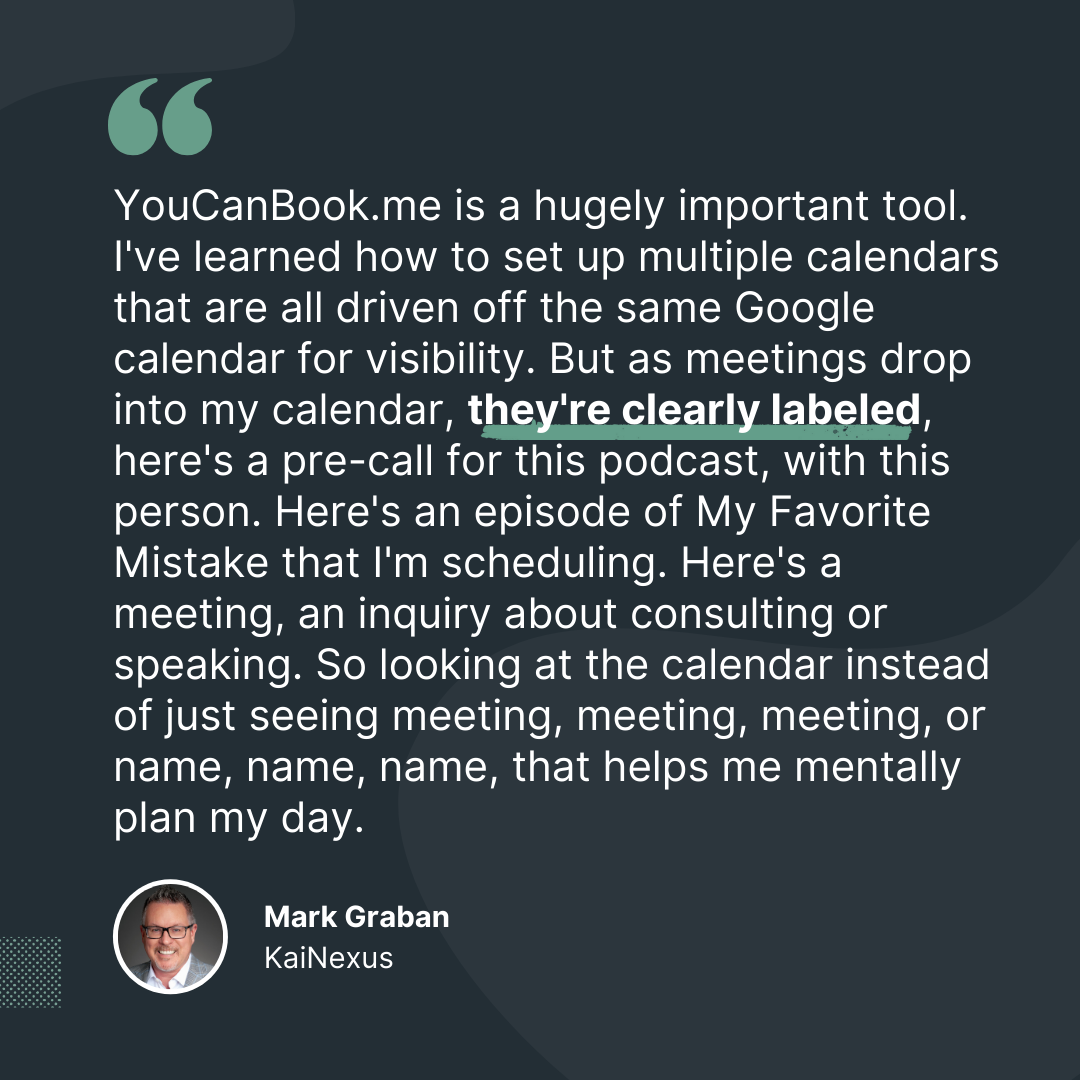
YouCanBook.me populates a lot of the stuff on my calendar, the workflows of generating Zoom meetings and different reminder emails and follow-up emails that are automated based on those different types of calendar appointments. Those are some things that are really useful.
Mark (36:18):
I try to limit the amount of time I spend on social media. And one way I've done that is basically deleting apps off my phone and trying to limit it. I'll use my web browser on the computer, but I don't need to be nervously fidgeting through my phone. Maybe that’s a productivity tip that I've tried embracing in recent years. I don't know if I have any magic tricks. I'm not an inbox zero guy. Many of the people at KaiNexus are really into that methodology. I don't know if I have any other particular methodologies or frameworks that I use. I'll give credit to my friend Dan Markovitz, who's written a couple of books on applying lean concepts to personal productivity.
Mark (37:05):
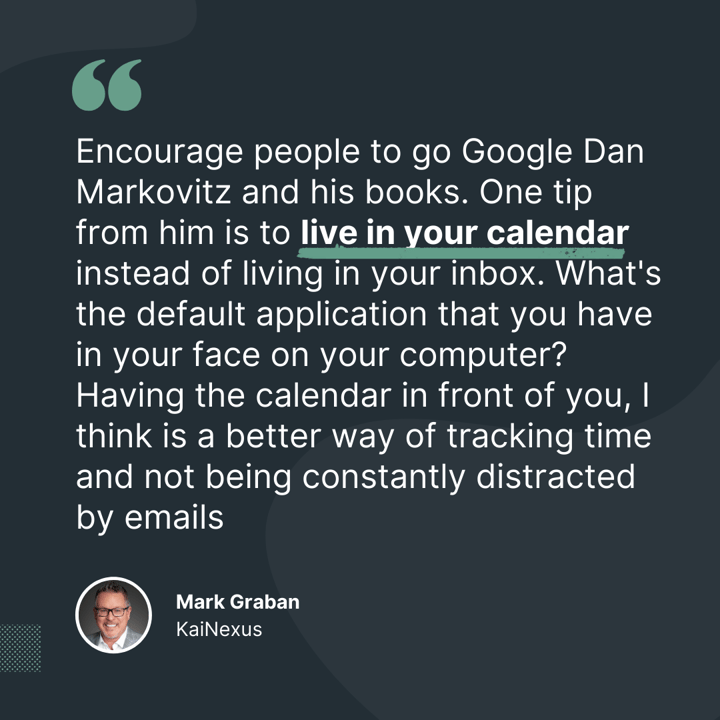
Like anybody, I can do better with my own productivity, but, again, I've blogged about, and I shared with you guys on social media, YouCanBook.me is a huge time saver. I didn't measure before and after how many hours a week was I spending scheduling meetings. How many miscommunications were being made about timing time zones? YouCanBook.me handles that beautifully, time zone, back and forth. So I know qualitatively it’s been a huge benefit to me and it's a time saver and a stress reliever. So, that's been great.
Ben (38:05):
Yeah. As you mentioned, just living within your calendar ‘cos you have so many things going on. It's like, “what's my day look like? What do I need to prepare for? How do I stay focused on that?” Everything fueling together and building out solutions with different tools like YouCanBook.me all helping keep that calendar up to date. One of your many podcasts, My Favorite Mistake, you allow your guests to just open up about the mistakes that they've made. So I wanted to ask you what, which was one of your biggest mistakes in your life and what did you learn from it?
Mark (38:35):
So My Favorite Mistake. Generally, we ask people to talk about workplace mistakes as opposed to broader life mistakes. Sometimes there's an overlap in that. A favorite mistake is one that I think influences us in some way. We learned from it. It's a mistake we've learned to avoid repeating. It's a mistake that led to some unexpected benefit. One story I've shared before, going back, this is like 2004, the last manufacturing company I worked for. I had not cured myself of the engineer trap. I'm an industrial engineer, undergrad of a master's degree in engineering and an MBA. There was still that trap of “I need to be the expert.”
Mark (39:32):
“I need to have the answers. I'm going to calculate the right answer. I'm going to have the right answer.” And so I wasn't as good. I think now I'm a better experimentalist. I put less pressure on myself to have the answer instead of having “well, here's something I could try. Here's something I could test”. What I wasn't good at then was engaging other people. Now some of that was my own practice. Some of it was the culture I was a part of. That it was still more of us, them, salaried, hourly engineers and managers come up with answers. Employees are just executing things. But I made some mistakes where I developed some solutions to problems that were too much of my own, not engaging people and having people participate in ideas make the ideas better and it helps people buy in to change.
Mark (40:31):
And so coming up with what you think is a great solution and then convincing people to go along, that's too late. I've, I've shared examples like that. I sort of reflect on some of these projects I was involved in earlier in my career. If I could go back in time, I would do it differently. I can't do that. So I've tried to be better now going forward. As a consultant, I won't let myself be put in a position where somebody wants me to come in and be the expert and tell them how to change their process. I'm like, “well, no, I'm not, that's not effective or it's not sustainable if I could come up with the quote-unquote “right solution.” So anyway, I think sharing stories like this, maybe give some comfort to people who are new in a field, younger in their career, to recognize we all make mistakes.
Mark (41:24):
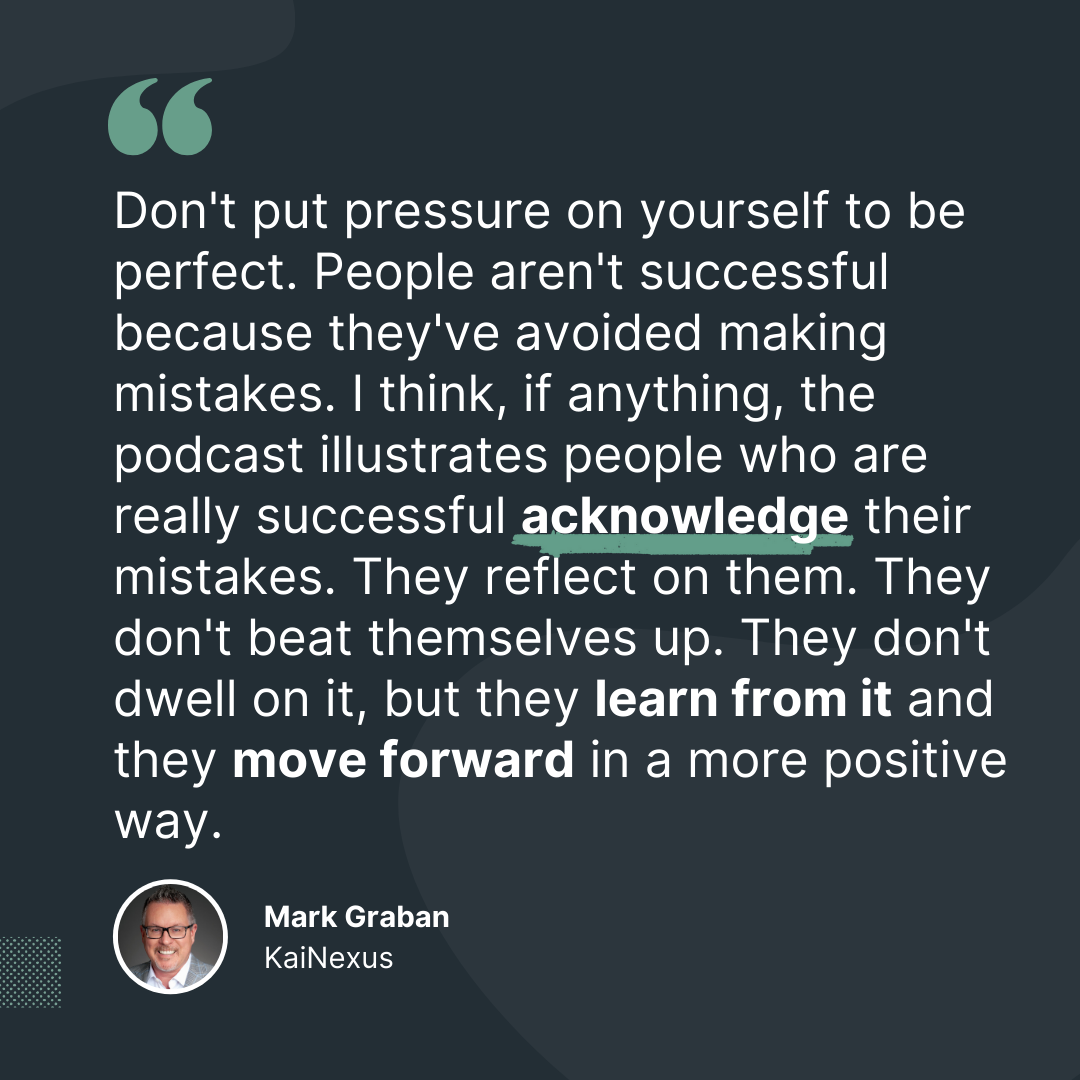
So try sharing stories about that personally. I have a habit with people I work with now, maybe it's annoying, I’ll freely admit, “Hey today I made this mistake, and let me tell you what I was thinking. Let me tell you why that turned out to be wrong. Let's learn from it. Let’s move forward.” So I think there's something to be said for sharing mistakes. I'm not really anybody's “boss” but I think if you're in a workplace, when you have a leader who has the humility, the openness to share mistakes, that does a lot to help create what we then might describe as a culture of continuous improvement.
Ben (42:22):
Yeah. And having just that vulnerability to say, “Hey, this is a mistake.” But like you mentioned in talking about continuous improvement, be like, “what have we learned from it?” So it's never, “you never win,” it's “you win and learn.” As long as you keep learning things and not making the same mistake over again too. That's really, really awesome. So, so what's next for you? What are you excited about? I know you just got back from a busy trip, so probably no trips, but what's exciting?
Mark (42:49):
I am scheduled for the first time in the middle of December to go to a class in person for the first time since March 2020. I've been doing so much Zoom time, a lot of virtual stuff, but I'm excited that this class that I had taught virtually a couple times, I get to now return back to kind of a healthcare, classroom conference room type environment. So I'm excited about that and, knock on wood, that still happens. I'm optimistic, as we go into 2022. I'm excited to get back out on the road. I've enjoyed being home a lot over these last 18 months. I've taken a little bit of a hit business-wise, but it's survivable. Again, I mentioned, I have a wife with a great corporate career and that provides us a sense of stability that a lot of people aren't fortunate to have. But I'm looking forward to striking the right balance. I would like to be able to travel for work that's fulfilling and places that are interesting to go to without being on the road all the time. That's one thing I'm looking forward to figuring out more.
Ben (44:05):
Yeah. Sounds great. Big year ahead for you navigating all of that. And for everybody listening to all that you have hopefully taken away from Kaizen, the continuous improvement, and everything there. So where can folks go to learn more about everything you’re working on and check out all of the books that you've written.
Mark (44:23):
Thanks for that. My website's markgraban.com. That's got links to different books and podcasts. My main blog is a different website, leanblog.org. Um, I'm pretty easy to find on LinkedIn. I think there's one other Mark Graban in the country who is an educator in California. But if you Google Mark Graban, you'll find me. I'm pretty easy to find online or, again, markgraban.com.
Ben (45:08):
We'll throw everything up on the blog as well, Mark. So thank you so much for taking the time to fill us in on everything that you've been working on and, and educating us on Kaizen and lean operations and all that good stuff. We appreciate you being on Get More Done and we hope you have a good rest of your day and a good rest of the year, too.
Mark (45:26):
Yeah. Well, thank you. Thank you to the whole team at YouCanBook.me for helping me get more done. I really do appreciate your service and, and what you do. It's great. Awesome.
Ben (45:37):
Thanks for being a customer, Mark. You're great. Thank you for listening to Get More Done. Be sure to subscribe wherever you get your podcast. If you or someone you know would like to be on the show, you can visit getmoredone.youcanbook.me, reach out to us on Twitter @YouCanBookMe or visit us on the forum forum.youcanbook.me. I'll catch you in the next episode. Cheers.
Subscribe to our newsletter
Get productivity tips, news, articles and resources.Written by
The YouCanBookMe team
We care... so we share. The YCBM team has a lot to say about online scheduling and improving productivity. We pay it forward with interesting articles, top tips, updates, and insights about how to be a scheduling ninja and a productivity pro!
Ready to book more meetings?
